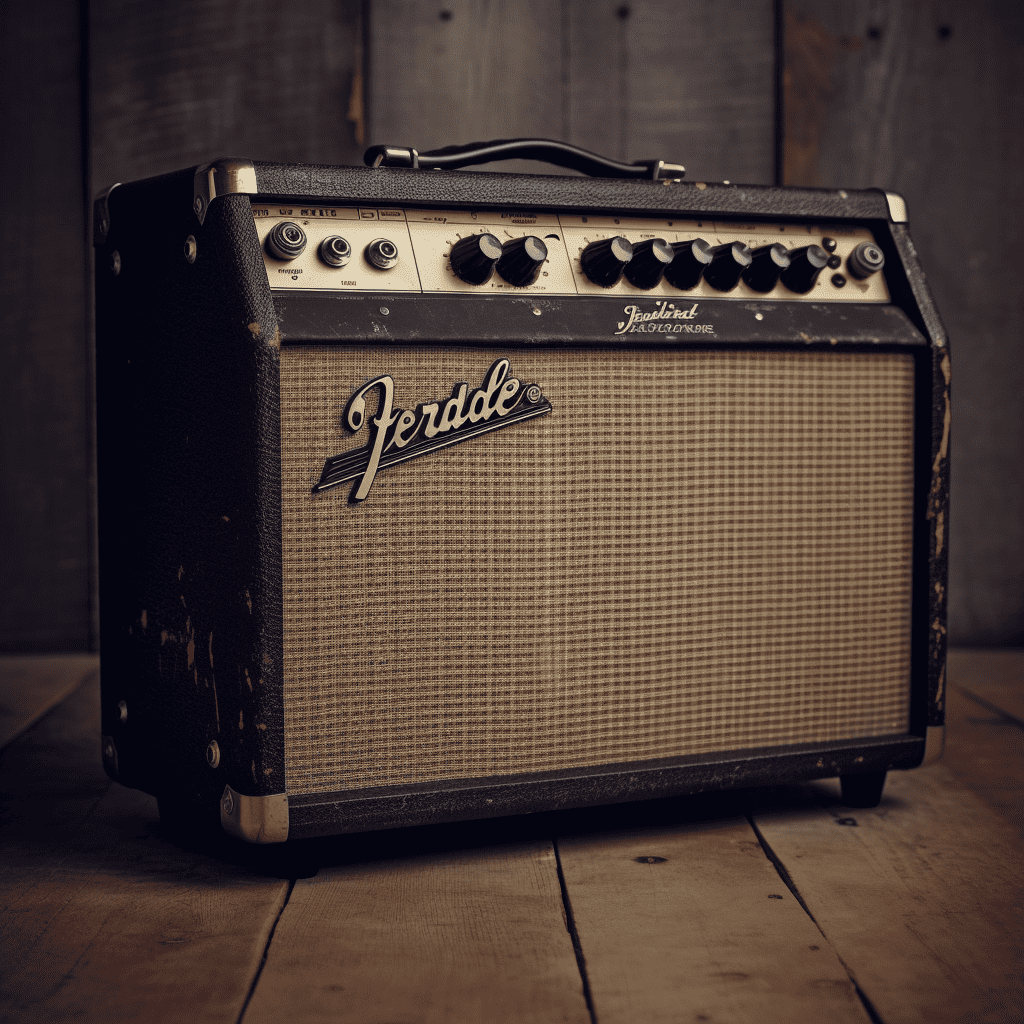You’ve probably seen those iconic images: a rock guitarist performing a blazing solo at a concert, or perhaps a local band at full throttle in a garage. These scenes paint the picture of the electric guitar as a powerhouse of noise. However, for those new to the world of guitars, you might be surprised to learn just how quiet an electric guitar can be without its trusty partner: the amplifier. Intrigued by this, I embarked on a personal mission, armed with a decibel meter, to uncover the true volume of an unplugged electric guitar.
Decibel Discoveries: Picks vs. Fingers
In a controlled, silent room setting, an electric guitar produces between 65 – 73 decibels when played with a pick. On the other hand, fingerstyle playing results in a softer range of 49 – 58 decibels. To put that into context, fingerpicked notes fall into the volume range of casual conversations. Interestingly, picks bring out a brighter and more uniform tone compared to fingers.
The Role of Amplifiers in Guitar Playing

Most guitar amplifiers belt out volumes of around 115 dB. Some, designed for larger venues or particular styles, can rocket up to 135 dB. In contrast, an unplugged electric guitar is around 50 decibels quieter. So while practicing without an amp at home is perfectly viable, it’s not the best choice for a bustling environment or live performance.
Is an Amp Essential?
An amp is not essential in every situation. Many guitarists occasionally forgo the amp, especially during practice sessions. However, for those new to the electric guitar world, consider integrating an amp into your initial budget. An electric guitar’s design inherently complements an amplifier, and when they come together, the result is sonically richer. This synergy becomes especially vital in outdoor or noisy environments.
Alternative Amplification Methods

If you’re not ready to invest in an amp yet or need a makeshift solution, here are some viable alternatives:
- Headphones: Ideal for private practice without disturbing others. Requires an adapter for compatibility.
- Home Stereo System: By using a ¼ female-to-male RCA adaptor, you can harness your home’s sound system for practice. It’s not as pristine as a dedicated amp but certainly louder than unplugged playing.
- Multi-effects or Pedal Processor: These devices merge a digital interface and software into a single unit. Most modern versions feature jacks compatible with headphones or speakers.
- Smartphones: Both iPhones and Android devices can double as guitar processors. You’ll need an interface to link your guitar, phone, and output device (like speakers). This setup offers a mobile and straightforward amplification solution.
Tuning Without an Amp: Is It Possible?
Absolutely. Directly plug your tuner into your guitar or employ a pedal tuner. Clip-on tuners are another silent solution. Smartphone apps, like Boss Tuner and CarlTune, are efficient when used in quiet surroundings. For those keen on honing their auditory skills, trying to tune by ear can be both challenging and rewarding.
Practicing Without an Amp: Yay or Nay?
Many guitarists mix their practice routines, sometimes with and sometimes without an amp. But it’s worth noting that an amp-free session won’t offer the same tonal depth and volume range.
Optimizing Your Electric Guitar Experience

Understanding the Relationship Between Guitar and Amp
One might wonder why electric guitars were designed to rely so heavily on amplifiers. The electric guitar operates on the principle of electromagnetic induction. When guitar strings (made of metal) vibrate, they disturb the magnetic field of the guitar’s pickups. This disturbance is then converted into an electrical signal, which is relatively weak. It’s the amplifier’s job to boost this signal, making it audible and allowing for various tonal adjustments.
Why Practice Without an Amp?
While an amplifier undeniably enhances the electric guitar’s sound, there are benefits to practicing without one:
- Volume Control: Ideal for late-night sessions or shared living spaces.
- Hearing Nuances: Playing without an amp can help you focus on your fingers’ movements and the raw sound they produce.
- Skill Development: It encourages you to play harder and develop finger strength.
Alternative Ways to Boost Sound
Apart from the methods mentioned earlier, a few other techniques can help augment your unplugged sessions:
- Acoustic Soundboards: Attachable soundboards can make your electric guitar sound a bit more like an acoustic one.
- Pocket Amps: These are small, portable devices that can give you a bit of amplification without the need for a full-sized amp.
- USB Interfaces: Devices that let you connect your guitar to a computer, allowing you to use software amplifiers and effects.
Choosing the Right Equipment for Your Needs
While it’s essential to understand how loud an electric guitar is without an amp, it’s equally crucial to know how to pick the right gear. Whether it’s selecting a guitar with the right type of pickups or choosing an amplifier that matches your playing style and environment, every choice plays a role in shaping your sound.
Having established the importance of understanding your equipment and the role it plays in your sound, let’s delve deeper into one of the most significant decisions an electric guitarist can make: selecting an amplifier. Amplifiers aren’t just about volume – they color and characterize the guitar’s tone in distinct ways. In the next section, we’ll review and compare four outstanding electric guitar amps to help you find the one that resonates with your musical aspirations.
Comparing Four Excellent Electric Guitar Amplifiers
When searching for the right amplifier, it’s not just about cranking up the volume. Factors like tonal quality, playability, and price play a pivotal role. To simplify your search, here’s a comparison of four leading electric guitar amplifiers on the market:
Fender Mustang LT-25

- Price: Typically found in the lower-mid range, the Fender Mustang LT-25 is an outstanding choice for beginners and intermediate players.
- Quality: Known for its solid construction and durability.
- Playability: With 25 presets covering a wide array of music—a collection of 20 amp types and 25 effects. It’s a versatile choice for diverse playing styles.
- Additional Features: It comes with a USB interface for easy preset editing and direct recording capabilities.
Marshall DSL40CR
- Price: This falls into the mid-high price range, more suited to serious hobbyists and gigging musicians.
- Quality: Marshall is renowned for its robust build and iconic rock tones.
- Playability: With dual channels (Classic Gain & Ultra Gain), it’s perfect for players who love to switch between clean and heavy tones.
- Additional Features: The amp boasts a digital reverb, softube emulated output, and a switchable power reduction feature which makes it easier to control volume without sacrificing tone.
Boss Katana-50 MkII
- Price: Generally affordable, falling in the mid-range price bracket.
- Quality: Renowned for its cutting-edge sound quality and robust construction.
- Playability: The Boss Katana-50 MKII offers five unique amp characters, which are customizable with the onboard five effects categories. A versatile choice for various genres.
- Additional Features: With its power-scaling feature, players can achieve a cranked-up tone without excessive volume. It also includes a custom-wattage setting for optimal performance.
Vox AC15C1
- Price: Typically in the higher mid-range price spectrum.
- Quality: The Vox AC15C1 is known for its vintage look and warm, jangly tones.
- Playability: Equipped with three 12AX7 preamp tubes and two EL84 tubes, it’s ideal for players seeking the classic British rock and roll sound.
- Additional Features: The amp comes with a built-in tremolo effect and spring reverb, giving an added dimension to your playing.
All four of the above amplifiers cater to different needs and playing styles. While the Fender Mustang LT-25 might be suitable for those exploring different genres, the Vox AC15C1 would be a delight for someone chasing the vintage tones. The Marshall, synonymous with rock, is for those aiming for powerful performances. On the other hand, the Boss Katana, with its modern features, appeals to the versatile player. Ensure you consider your playing style, musical preferences, and budget before making a decision. Remember, the right amplifier will not only project your sound but enhance your overall playing experience.
The Evolution of Electric Guitars and Amps

Navigating the vast world of amplifiers, you’ll find that innovation is rooted in a rich history. Before diving into the current technology and diverse brands available today, let’s journey back and explore the origins of these marvelous instruments. Understanding the past provides invaluable context, helping us appreciate the beauty and power of modern electric guitars and amps even more.
A Journey Back in Time
It’s fascinating to realize that electric guitars haven’t been around for as long as many might assume. The need for louder guitars became apparent in the early 20th century, with big bands drowning out traditional acoustic guitars. The invention of the electric guitar revolutionized the music scene, allowing guitarists to command the attention they deserved.
How the First Electric Guitars Sounded Without Amps
The early electric guitars were essentially modified acoustics with electromagnetic transducers. Even without amplification, they were a tad louder than traditional guitars but nowhere near what we’re familiar with today. Amplifiers were an integral part of the electric guitar evolution, allowing the instrument to find its voice.
The Versatility of Electric Guitars
What truly sets electric guitars apart is their adaptability. From jazz and blues to rock and metal, the electric guitar has found its place in nearly every genre of music. This is largely due to the ability to modify its sound with various amps and effects.
Balancing Tone and Technique
It’s essential to understand that while equipment plays a significant role in sound production, technique remains paramount. Some guitarists focus extensively on acquiring the best equipment but overlook the importance of honing their skills. Remember, a great guitarist can make even the most basic equipment sing.
The Role of Technology in Modern Amplification
In today’s digital age, the line between traditional amplifiers and software has blurred. Programs and apps can emulate iconic amps, allowing guitarists to access a plethora of tones without investing in bulky equipment. It’s an exciting time for electric guitar enthusiasts, with technological advancements enhancing the playing experience.
Conclusion
Electric guitars are marvels of modern musical engineering. Their ability to produce sound, even without the powerful projection of an amplifier, is a testament to their design and the passion of guitarists worldwide. From our deep dive into the actual decibel levels of an unplugged electric guitar to exploring some of the finest amplifiers in the market, it’s evident that the world of electric guitars is as vast as it is fascinating.
The journey from the first electric guitars to the sophisticated amps of today is a story of innovation driven by the insatiable desire of musicians to be heard and to express their artistry. Whether you’re strumming in the solitude of your room without an amp or rocking out on a grand stage with the best amplifier, the electric guitar ensures your notes resonate. Always remember, it’s not just about the volume; it’s about the emotion and soul you inject into every chord and riff. Happy playing!
Frequently Asked Questions (FAQs)
1. Why is my electric guitar so quiet without an amp? Electric guitars are designed with pickups that capture string vibrations and convert them into an electrical signal. This signal is relatively low in volume. Amplifiers boost this signal, making the guitar sound loud and clear. Without an amp, you’re hearing the acoustic sound produced by the strings vibrating over the solid body of the guitar.
2. Can I damage my electric guitar by playing without an amp? No, playing an electric guitar without an amp won’t cause any damage. The guitar will simply produce a quieter sound. However, plugging into a poorly maintained or incorrect type of amplifier can potentially harm the instrument.
3. Is there a way to get a louder sound without an amplifier? While nothing replaces the volume and tone control an amplifier offers, there are alternatives. Using headphones, home stereo systems, or apps on smartphones can somewhat amplify the sound. Still, for best results, especially in group settings, an amp is recommended.
4. What’s the difference between practicing on an acoustic guitar and an unplugged electric guitar? Acoustic guitars are built to resonate and project sound naturally, giving them a louder and fuller sound when played. An unplugged electric guitar has a quieter, more muted sound. Some players find that practicing on an unplugged electric allows them to hear mistakes more clearly.
5. Can I use bass guitar amplifiers for my electric guitar? While it’s possible, bass amps are designed to handle lower frequencies. Using a bass amp for an electric guitar might not provide the clear treble and midrange tones you’d expect. If you frequently switch between bass and electric guitar, consider amps designed to handle both.
6. Is it necessary to use a pick to get a louder sound on an unplugged electric guitar? Using a pick can produce a brighter and slightly louder sound due to the harder material striking the strings. However, fingerstyle playing offers its own unique tonal qualities. Both techniques have their merits, and choice often boils down to personal preference and the style of music being played.
7. Are there apps that can emulate the sound of famous amplifiers? Yes, there are many apps available that offer digital emulations of iconic amplifiers. Some popular options include AmpliTube, BIAS FX, and Tonebridge. These apps can be a cost-effective way to experiment with various amp sounds without investing in physical gear.
